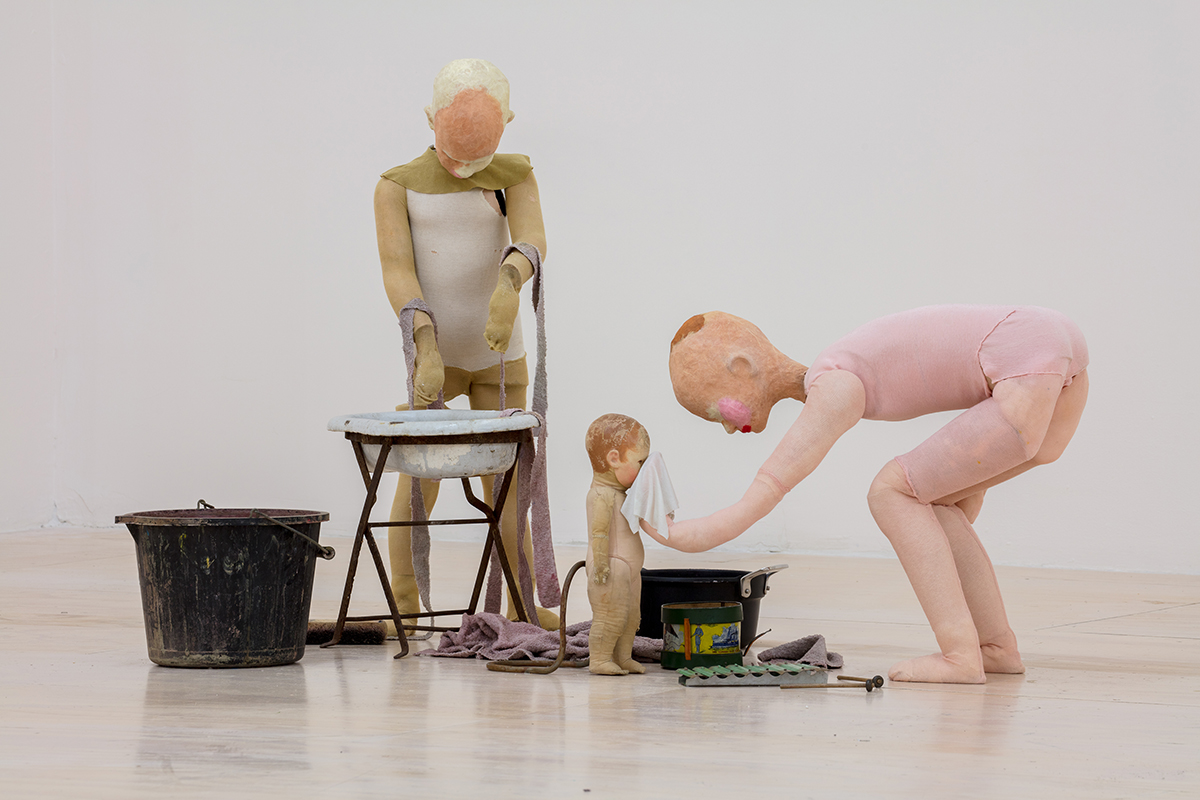
‘Untitled’ (2012) by Cathy Wilkes at MoMA PS1, New York, 2017

Zoe Whitley
Traditionally, art exhibitions have been directed by curators, but now there is a move to hand the reins over to the artist. As the eighth edition of Frieze New York gets underway, Zoe Whitley, curator of the British Pavilion at the 2019 Venice Biennale, discusses how allowing artists the freedom to realize their vision can lead to a deeper, shared experience of the work
DEUTSCHE BANK WEALTH MANAGEMENT x LUX
Artists encourage us to see things around us anew, pushing us to reframe and re-examine contexts that are already well established. As a curator, working with and learning directly from artists has given me the greatest insights, which is why I think it is crucial to listen to artists when it comes to putting together a show.
‘Artist-led’ has become something of a buzzword lately, but it is easier said than put into practice. It is certainly not easy to put one’s ego aside and listen – really listen – to what an artist needs. Rather than asking an artist, “I have this idea, can you illustrate it?”, a curator should instead establish trust and, perhaps counterintuitively, ‘do’ less by allowing the work to unfold and by supporting the artist as they need it, particularly where new commissions are concerned. Of course, as in all projects, there are production and press deadlines to juggle and other logistical realities, but one has to also be sensitive to the fact that artists can’t necessarily (and shouldn’t have to) work to a Gantt chart. Ultimately, deadlines are imposed and as a curator one needs to focus on creating (within a framework) as much space as possible around the artist so they are able to think, respond and reflect. Only then can one come in and ask questions.
Follow LUX on Instagram: the.official.lux.magazine
This is particularly relevant in a context like the Venice Biennale, in which you are essentially inviting an artist to realize one of their most ambitious visions. In fact, this year’s Biennale marks a shift in how we have tackled the curation of the British Pavilion. For the first time, an open call by the British Council, which has been responsible for the British presentation at the Biennale since 1937, invited mid-career external curators to apply for the position, creating an opportunity for an international arts professional working in the UK. That, too, is a more collaborative, outward-looking approach. I am honored to have been selected and am the first African American to hold such a position attached to a national pavilion. (Given that firsts are built on other firsts, I credit Kinshasha Holman Conwill and Grace Stanislaus, who, in 1990, curated five artists from Africa at the Venice Biennale, under the auspices of the Studio Museum in Harlem.)
A collaborative approach is important in showing that there is not only one way to work or live or even to be. Collaboration can yield brilliant ideas and greater diversity of thought and creativity, no matter what the end format of those ideas is. This year’s British Pavilion and the Biennale are a reminder that things don’t have to be done the way they have always been done, and there is a sense of hitting ‘refresh’ every two years that feels very affirming to me right now.
The artist representing Britain, Turner Prize-nominated Cathy Wilkes, is testament to this. Working with her has been fascinating and an exercise in humility. Cathy and I have had a fruitful rapport, thinking through the subtleties in her work. From the get-go it has been important to me to take her lead, and I have said to her, “Even if the show is a huge success, if you are unhappy with it, then I will feel like we failed.”
I always say that Cathy’s work is art that whispers rather than shouts. She won the inaugural Maria Lassnig Prize for mid-career artists in 2017, and the resulting show, at MoMA PS1 in New York City, was not only incredibly beautiful but also very subtle. It featured minimal curatorial interventions. There were no texts obfuscating the works, instructing how the viewer must respond to them. It allowed for a particularly contemplative experience but also, honestly, a slightly disconcerting one without those usual didactic prompts. I’ll say it: contemporary art can sometimes be tricky to engage with if you don’t have any prior knowledge of the art or the artist. But not everything has to be easy or prescriptive. Cathy’s work comes from her singular vision, yet she doesn’t want to impose one preconceived experience upon the viewer, hence the constant attempts at paring back and stripping away (texts, titles, even light fittings) to make as much room for the viewer as possible. I find that hugely refreshing and honest. It’s also incredibly freeing, because we can all find our own way and together pose a series of questions, or come to her work with our own personal experiences.
Read more: Art collector Kelly Ying on supporting young artists
It is also significant that the UK artists at this year’s Bienniale (Charlotte Prodger for Scotland and Sean Edwards for Wales), like Cathy, have all contributed to dynamic and vibrant artistic communities outside of London, in Glasgow and Cardiff. It suggests we can move beyond what we think of as the default capital centers of cultural production and, perhaps, question the very notion of national representation as suggesting only one allegiance. Cathy herself was born in Northern Ireland and lives and works in Scotland. National boundaries don’t need to be fixed or prescribed. This matters to me now more than ever, and is something that the British Council has embraced.
Where is all this heading? Are the arts, like so many other sectors, moving more towards a mindful experience? I’m not one for trend-casting but I’d say there’s space for everything. What I really appreciate is that, in Venice at least, we have been given the chance to create a space for quiet and for seeing with an innocent eye and we can all discover something new in a shared space. We can all be non-initiates – together.
The 58th Venice Biennale runs from May 11 to November 24, 2019. For more information visit: labiennale.org/art
This article first appeared in the Deutsche Bank Wealth Management x LUX supplement inside the Summer 19 Issue.








